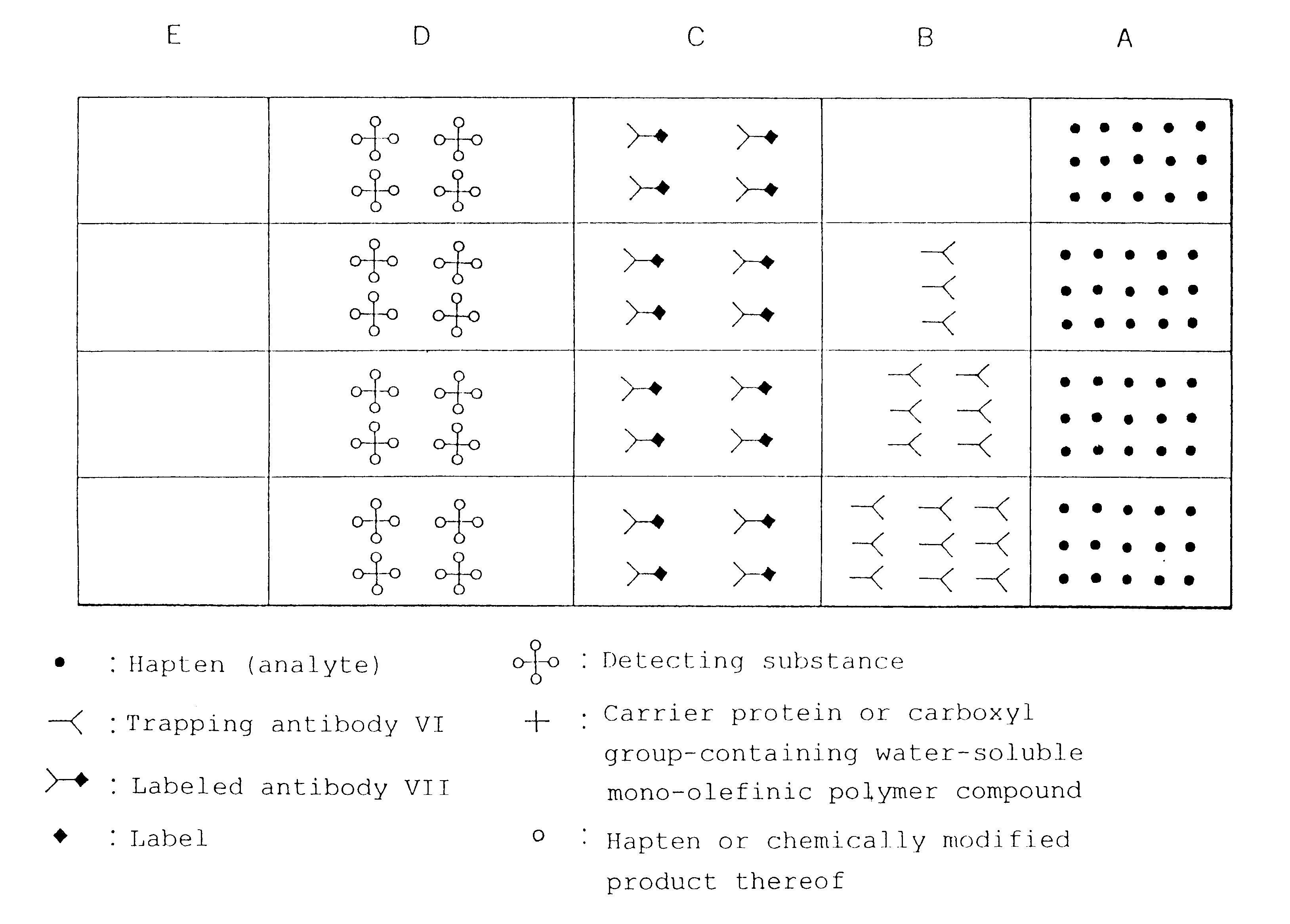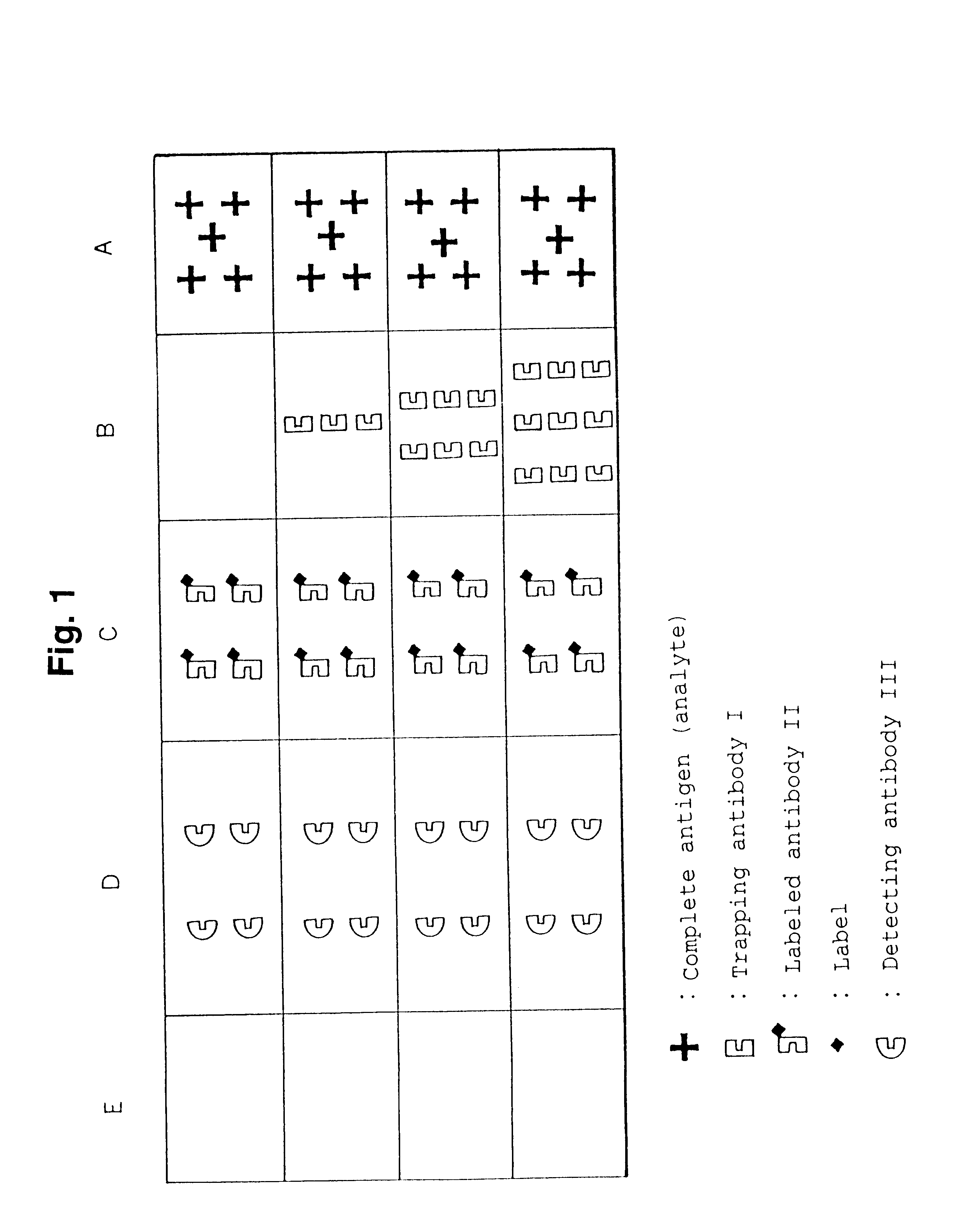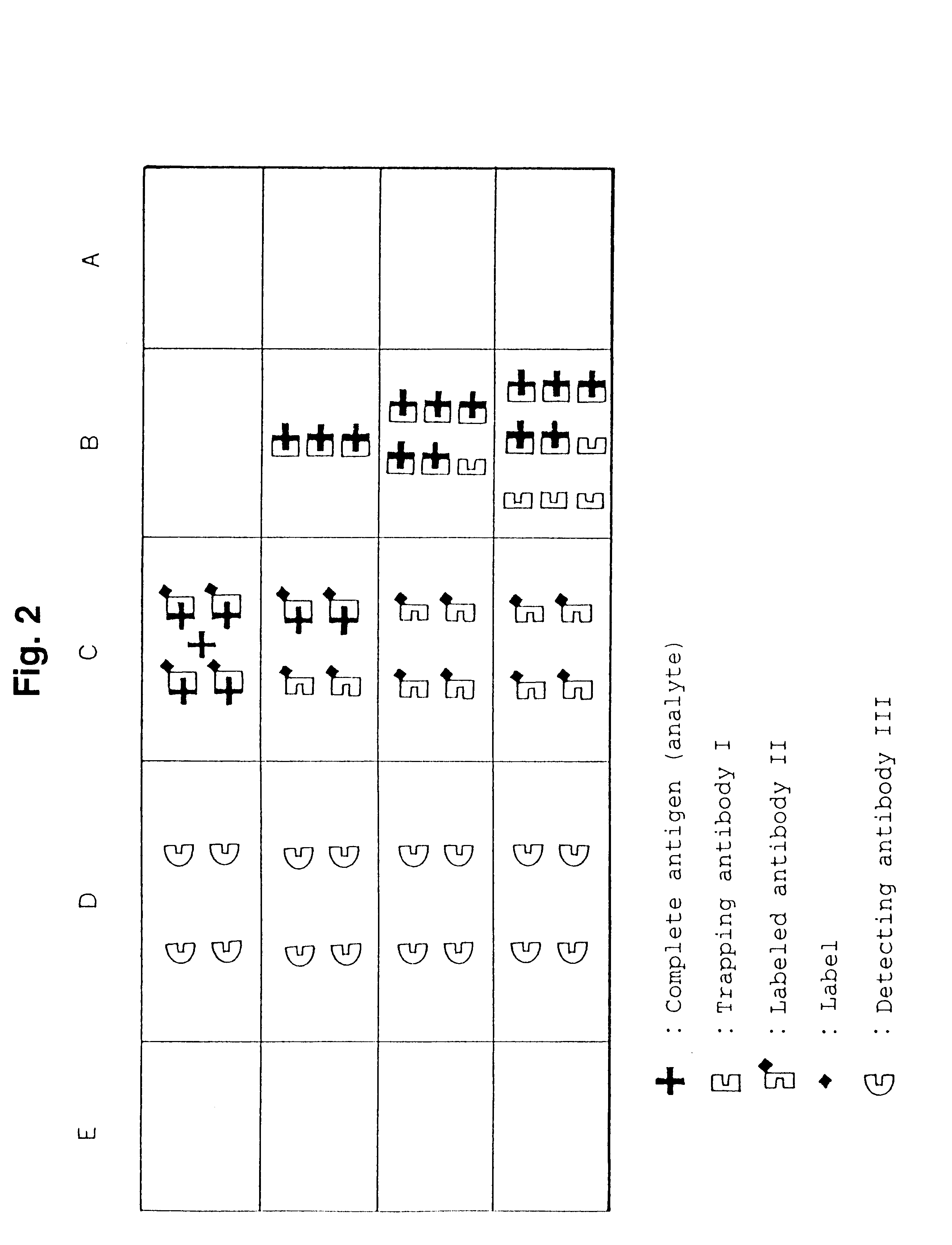Simple immunochemical semi-quantitative assay method and apparatus
a semi-quantitative assay and immunochemical technology, applied in the field of simple immunochemical semi-quantitative assay methods and apparatuses, can solve the problems of increasing the possibility of an examiner being infected with pathogens from blood, urine, etc., and the method is difficult to use practically
- Summary
- Abstract
- Description
- Claims
- Application Information
AI Technical Summary
Benefits of technology
Problems solved by technology
Method used
Image
Examples
example 1
Measurement of hCG (human chorionic gonadotropin)
1-a) Preparation of anti-hCG monoclonal antibody
Balb / c mice were notally subcutaneously administered with both hCG (10,000 iu / mg) and Freund's complete adjuvant three times at intervals of 3 weeks, and further, after 3 weeks, the mice were intraperitoneally administered with hCG. Three days after the final immunization, spleen cells and myeloma cells (NS-1) were fused according to a conventional method, HAT selection was carried out, and cloning was repeated to give a fused cell strain to secrete an hCG-specific antibody and a fused cell strain to secrete a monoclonal antibody which recognized an .alpha.-subunit which cross-reacted with hCG, hLH and hFSH.
Each cell strain was intraperitoneally administered to Balb / c mice which were administered with Puristane in advance, to form ascitic tumor, and ascites was obtained. The so-obtained ascites was purified by ammonium sulfate fractionation and with an Affigel-protein A MAPS KIT, and fre...
example 2
Measurement of hLH (human luteinizing hormone)
2-a) Preparation of anti-hLH specific monoclonal antibody
hLH was used as an antigen, and in the same manner as in Example 1-a), Balb / c mice were immunized, and cell fusion was carried out by using the spleen cells thereof, to give a fused cell strain to secrete an hLH specific monoclonal antibody and a fused cell strain to secrete a monoclonal antibody which recognized an .alpha.-subunit which cross-reacted with hCG, hLH and hFSH. Each cell strain was intraperitoneally administered to Balb / c mice which were administered with Puristane in advance, to form ascitic tumor, and ascites was obtained. The so-obtained ascites was purified by ammonium sulfate fractionation and with an Affigel-protein A MAPS KIT, and freeze-dried to give a white powder of a monoclonal antibody.
The above-obtained anti-hLH-specific monoclonal antibody was used for producing an antibody-fixed portion (B) and a detection portion (D), and the monoclonal antibody which ...
example 3
Measurement of estrogen
3-a) Preparation of estriol-16-glucuronide-BSA
Estriol-16-glucuronide in an amount of 40 mg was dissolved in 1.0 ml of dimethylformamide (DMF), and 20.6 .mu.l of tri-n-butylamine was added thereto at 4.degree. C. or lower. Then, 11.2 .mu.l of isobutyl chlorocarbonate was added, and the mixture was stirred for 30 minutes. This mixture was mixed with a liquid prepared in advance by dissolving 117 mg of BSA (bovine serum albumin) to 2.8 ml of water, adding 150 .mu.l of a 1N NaOH solution, then adding 2.0 ml of dimethylformamide and keeping the mixture at 8.degree. C. Then, the resultant mixture was stirred at 8.degree. C., and after 1 hour, 16.6 .mu.l of a 1N NaOH solution was added. The mixture was further stirred for 3.5 hours, and then unreacted estriol-16-glucuronide and reagents having a low molecular weight such as tri-n-butylamine, etc., were removed with Sephadex G-25. The resultant reaction mixture was dialyzed (with purified water), and then freeze-dried...
PUM
 Login to View More
Login to View More Abstract
Description
Claims
Application Information
 Login to View More
Login to View More - R&D
- Intellectual Property
- Life Sciences
- Materials
- Tech Scout
- Unparalleled Data Quality
- Higher Quality Content
- 60% Fewer Hallucinations
Browse by: Latest US Patents, China's latest patents, Technical Efficacy Thesaurus, Application Domain, Technology Topic, Popular Technical Reports.
© 2025 PatSnap. All rights reserved.Legal|Privacy policy|Modern Slavery Act Transparency Statement|Sitemap|About US| Contact US: help@patsnap.com



